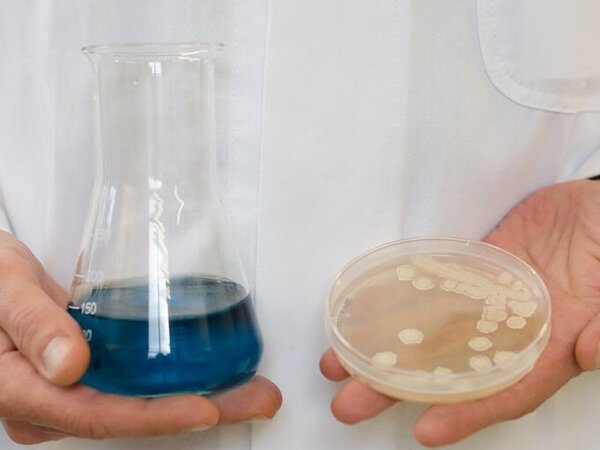Expertise
Biotechnical and chemical conversion processes
Ulf Prüße | 27.05.2022
Chemical products can be produced not only from crude oil but also from biomass. To do so, however, they have to be biotechnologically and/or chemically converted and further processed. At the Thünen Institute, we are working to develop and evaluate the best possible pathways from raw materials to products.
Sugar, starch, cellulose, fats and oils as well as other ingredients from biomass can only in the rarest cases be used directly for the production of biobased chemical products. In the vast majority of cases, it is necessary to convert the substances in biorefineries into intermediate products of the chemical industry such as alcohols, organic acids or unsaturated compounds. These are then further processed into marketable products. Both biotechnological and chemical, in particular chemo-catalytic conversion processes (= conversion or refining processes) can be used for this purpose.
In the past decades, fossil resources, especially crude oil, were cheap and available in large quantities. As a result, the chemical industry has concentrated on this raw material base and developed highly efficient process routes. For the desired climate-neutral, i.e. CO2 emission-free economy, the chemical industry must also increasingly use renewable and CO2-neutral raw materials such as biomass. However, the conversion of biomass means having to develop new process routes, sometimes reviving old routes from the pre-petrochemical era. In both cases, the conversion processes must be highly efficient. This can only be achieved by using highly specific catalysts - both biological and chemical ones - and by optimizing process conditions.
But which process route should be taken, the biotechnological or the chemical one? As is so often the case, it all depends. For the production of some products, such as itaconic acid, L- or D-lactic acid, bioconversion is the appropriate route; for others, only chemical-catalytic conversion is an option, as in the case of 5-hydroxymethylfurfural (HMF). Sometimes biotechnological and chemical process routes also compete with each other - example n-butanol. In this case, the advantages and disadvantages of both process variants must be compared and weighed up without prejudice in order to identify the best possible process route in the end.
However, biotechnological and chemical process routes can also complement each other well. One example is bioethanol, which is produced highly efficiently from carbohydrates in the world's largest fermentation process and, as a platform chemical, can supply a large number of today's basic chemicals and commodities via chemo-catalytic conversions.
More information on research work on both bioconversion and the chemo-catalytic conversion of renewable raw materials can be found at the Thünen Institute of Agricultural Technology.







